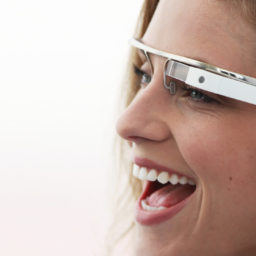Techstars Music just announced their first batch. A quick look at the selected startups.
It feels like we’re seeing a new wave of music startups. A lot of the excitement that marked the time around 2007–2010 is back in the air, and it’s great to see an acclaimed startup accelerator like Techstars dedicating a program to music.
As platforms from that age, like Spotify and Soundcloud, are reaching maturity and estranging early adopters, a new generation of music startups is starting to emerge. Techstars Music just announced their first batch of music startups, so I wanted to highlight each of them — as what these startups do may well end up profoundly shaping the business of music in years to come.
Alphabetically:
Amper — ampermusic.com
A tool to create AI-composed music for videos and other professional content. Unfortunately I haven’t been able to test out the product yet, and their only demo video doesn’t reveal much. It seems like they’re working on something similar to Jukedeck, but possibly in a way where users have a higher degree of influence on the final outcome.
AI-composed music is an important trend for years to come and Amper‘s working with an impressive team which includes accomplished Hollywood sound designers and composers.
Hurdl — hurdl.com
LED wearables to enable interactive audience experiences at live events. They let artists light up entire audiences, or just one fan. Their pitch deck suggests lighting up people based on gender, Spotify top fans, or sports team preference. It also allows for direct messaging to fans during or after shows.

JAAK — jaak.io
I first heard about JAAK when I met the founders at Music Tech Fest’s blockchain roundtable in Berlin last year. They’re using blockchain technology to connect music, metadata, and rights information. They’ve been working on pilots with Viacom, PRS for Music, and PPL. One of their founders is a core developer for Ethereum and is behind Swarm, a distributed storage platform, creating a kind of peer-to-peer web, instead of server-centric.
Pacemaker — pacemaker.net
I’ve actually urged people to use this app in a recent piece about being an early adopter. It uses smart algorithms to turn your Spotify playlists into DJ mixes. You can then edit transitions and play around with effects. It also has a social component: you can comment on and like other people’s mixes in the app.
There’s a DJ by the name of bas on Pacemaker who has some particularly awesome mixes, so be sure to follow him 😉

With Techstars’ support, I hope they figure out how to reach that exponential growth. I think it’s a really good time to start using the app and build a profile for yourself, so you can benefit optimally when they reach that growth.
(Personal wishlist: more editing controls on transitions on mobile, particularly exact timing, rather than snapping to markers 😇)
Interactivity and adaptivity of music is an important trend. I see Pacemaker as one of the first companies who has a great chance of being one of the first leaders in this domain.
Pippa — pippa.io
The pitch on Pippa’s homepage differs a bit from what I’ve read elsewhere, so I assume they’re pivoting. They currently present themselves as a platform which helps to distribute your podcasts and analyze data based upon that. What I’ve read elsewhere sounds very promising:
“Pippa makes podcasting simpler, smarter, and more profitable by enabling targeted ads to be delivered dynamically to listeners. Pippa technology can also be used to remove ads from podcasts, enabling future subscription revenue products.”
PopGun — wearepopgun.com
Another startup specializing in AI-composed music. PopGun uses deep learning to create original pop music. One of its founders is well-known in music tech circles, having previously founded We Are Hunted, which sold to Twitter and eventually became Twitter Music.
Have been having some great conversations about Creative AI recently. Particularly discussing the human element: some argue computers will not be capable of creativity, but in the way we perceive the world around us, we as humans will use our creativity anyway… I believe that opens up the possibility for a future in which AI-created art can become mainstream.
Robin — tryrobin.co
The pitch:
“Robin is a personal concierge for concerts and live events. Robin reserves and secures tickets on behalf of fans while providing real-time demand data to artists and event organizers.”
It’s an interesting proposition in times of secondary ticketing… I’m concerned they may be met with some skepticism, but the idea of having fans personally connect to a tool like this and then securing tickets before scalpers can get to them seems like a good addition to the ticketing landscape.
They’re currently available in the US and Canada, and will be expanding to the UK early 2017.
Shimmur — shimmur.com
This may be the app I’m most excited about in this batch. Shimmur is a social network for fans and ‘influencers’ to connect. It’s currently comprised of a lot of Musical.ly stars and their fans, so the demographic is very young.
Instead of having the artist communicating to fans, Shimmur turns it around. Tribes of fans can create comment to which the influencers react. Very appealing and the social competition that may emerge in vying for influencers’ attention may create interesting business models.

There are also some interesting concepts that could be introduced from gaming, like vanity items, rival goods, and quests.
Hope to see someone finally get this right.
Superpowered — superpowered.com
A mobile audio engine that provides low-latency audio for games, VR, and interactive audio apps. It’s apparently already used by DJ app Crossfader, Uber, and a number of games and other apps, together totalling at hundreds of millions of app installs.
Syncspot — syncspot.net
Syncspot uses an “AI assistant to create and fulfil free-gift media rewards for in-store promotions”. Their homepage lists a campaign that reminds me of Landmrk: users get a call to action to go to a certain location on the map (like a store) to receive a reward. Think Pokémon Go.
Weav — weav.io
This startup has been on my radar for a long time. It lets creators make adaptive music that recomposes itself in real-time, based on whatever the user is doing. I’m a firm believer in adaptive music that adapts to the user’s context and believe the way people currently use music to augment their moods shows the opportunity for adaptive audio.
They’ve built a tool for musicians to create this type of music, as well as an SDK for developers, so they can add a player to their apps which is capable of playing this type of media.

Fun fact: Weav is co-founded by one of the creators of Google Maps.
Best of luck to Techstars & all the startups.











